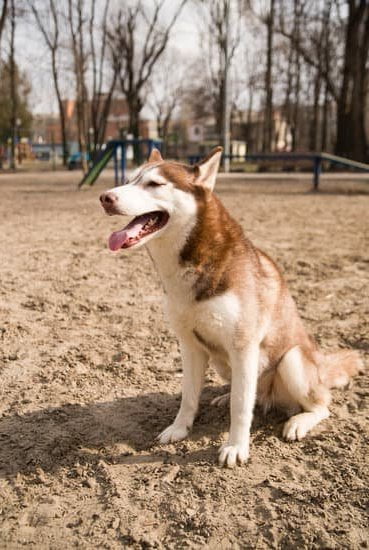Welcome to the world of clicker training for dog owners. This article aims to demystify the concept and provide you with a comprehensive understanding of when to use a clicker for dog training. Whether you are new to clicker training or simply looking to enhance your existing training techniques, this article will equip you with the knowledge and skills necessary to harness the potential of clicker training for a well-behaved canine companion.
Clicker training is a positive reinforcement-based method that utilizes a small handheld device, called a clicker, to mark desired behaviors in dogs. The beauty of clicker training lies in its effectiveness and ease of use.
It offers a precise way of communication between you and your furry friend, enabling you to reinforce good behavior instantly. By pairing the sound of the clicker with positive reinforcement, such as treats or verbal praise, dogs quickly learn to associate the sound with success and strive to repeat the behavior that earned them the reward.
One of the main benefits of using a clicker for dog training is its ability to accelerate learning. It allows for clear communication and removes any confusion or ambiguity from your instructions.
Additionally, by breaking down complex behaviors into smaller steps and reinforcing each step along the way, dogs gain confidence and understanding faster. Whether you are starting from scratch or fine-tuning specific obedience commands or tricks, using a clicker can greatly improve your dog’s responsiveness and overall training experience.
So, keep reading as we delve deeper into the world of clicker training. From understanding its basics and mechanics to identifying situations where it proves particularly effective, this article will guide you every step of the way. Get ready to unlock the full potential of clicker training for transforming your beloved companion into a well-behaved and happy member of your family.
Understanding the Basics of Clicker Training
Clicker training is a widely used and effective method for training dogs. This section will delve into the basics of clicker training, explaining its principles and mechanics. By understanding these fundamentals, dog owners can better utilize the clicker as a tool for precise communication with their canine companions.
The Principles of Clicker Training
Clicker training is based on the principles of positive reinforcement. The idea behind it is to use a distinct sound, such as a click from a mechanical clicker or another marker word, to signal to the dog that they have performed a desired behavior correctly. This sound is then immediately followed by a reward, usually in the form of treats or praise.
The click serves as an event marker, communicating to the dog that their action at that precise moment was correct and will be rewarded. By using this clear and consistent signal, dogs quickly learn to associate the sound of the click with positive reinforcement.
Precise Marking of Desired Behaviors
One of the key benefits of using a clicker in training is its ability to provide precise timing for marking desired behaviors. Unlike verbal cues or physical gestures, which may vary in consistency or be delayed, a click allows for immediate feedback to let the dog know exactly what they did right.
This precision helps eliminate confusion for both the trainer and the dog during training sessions. For example, when teaching a dog to sit, clicking at the exact moment their bottom touches the ground effectively communicates that sitting is what earns them praise and rewards. Without this precise marking, it may be challenging for dogs to understand which specific action is being reinforced.
By utilizing clicker training and understanding its principles and mechanics, dog owners can establish clear communication with their pets and create positive associations with desired behaviors. The next section will discuss situations where clicker training can be particularly effective in accelerating training progress.
Identifying Situations Where Clicker Training is Particularly Effective
Accelerating Training Progress
Clicker training can be particularly effective in certain situations, where it has the ability to greatly accelerate training progress. One such situation is when teaching a new behavior or command to a dog. The clicker serves as a precise marker for the desired behavior, making it easier for the dog to understand which action is being rewarded. This clear communication helps the dog learn faster and eliminates confusion.
Additionally, clicker training can be highly effective in shaping behaviors that may be more challenging to teach using traditional methods. For example, shaping complex tricks or advanced obedience commands can be made easier with the use of a clicker. By breaking down the behavior into small steps and clicking and reinforcing each successful approximation, dogs can quickly grasp what is expected of them and progressively build towards the final behavior.
Enhancing Specific Obedience Commands or Tricks
Clicker training can also enhance specific obedience commands or tricks by increasing precision and fine-tuning the behavior. For example, if you want your dog to have a solid recall, using a clicker can help you reinforce and reward each instance of your dog coming when called promptly and enthusiastically. This not only strengthens the recall behavior but also encourages your dog to perform it consistently in different environments and distractions.
Similarly, if you are teaching your dog intricate tricks like weaving between legs or spinning in circles, using a clicker can help capture those precise movements at exactly the right time. When timing is crucial for these types of behaviors, the clicker provides an immediate auditory feedback that guides your dog’s understanding of what leads to reinforcement.
Building Confidence and Focus
Another situation where clicker training excels is in building confidence and focus in dogs. In many cases, timid or anxious dogs benefit from positive reinforcement-based methods like clicker training because they promote trust and create an enjoyable learning environment. The consistent clicking and rewarding of desired behaviors can boost a dog’s confidence, encouraging them to try new things and engage in training sessions more willingly.
Similarly, utilizing clicker training techniques can help dogs become more attentive and focused. By precisely marking the desired behavior with a click, dogs quickly learn that paying attention to their owner and offering the correct behavior leads to rewards. This increased focus not only improves training outcomes but also strengthens the bond between you and your dog.
The Importance of Timing and Consistency in Clicker Training
Timing and consistency are crucial factors in clicker training. In order to effectively shape, reinforce, and communicate with your dog using a clicker, it is essential to understand the significance of timing and consistency during training sessions.
Proper timing is key in clicker training because the click serves as an immediate marker for when your dog performs the desired behavior. By clicking at the precise moment your dog exhibits the desired behavior, you create a clear association between the behavior and the sound of the clicker. This helps your dog understand exactly what they are being rewarded for.
For example, if you want to train your dog to sit, you would click the moment their bottom touches the ground. The immediate feedback provided by the clicker helps them associate sitting with receiving a reward.
Consistency is also vital in clicker training because it reinforces and solidifies the connection between behaviors, rewards, and the clicker sound. Consistency means delivering reinforcement consistently each time you click.
If you’re inconsistent with when you deliver rewards after clicking, it can confuse your dog and undermine their understanding of what actions lead to rewards. For instance, if sometimes you immediately follow a click with a treat while other times there’s a long delay in providing reinforcement, your dog may become uncertain about what they did correctly to earn reward.
To improve timing and consistency during clicker training sessions, consider these tips:
- Practice precision: Be mindful of when precisely to use the clicker by observing your dog’s actions closely.
- Use short sessions: Keeping training sessions short allows for better focus from both you and your dog.
- Be consistent with reinforcement: Ensure that every time you use the clicker, you follow it up with an appropriate reward promptly.
- Use a marker word or signal: Supplementing clicks with verbal cues like “Yes.” can help bridge any gaps in timing or aid when situations don’t allow for using a physical sound.
By prioritizing timing and consistency in clicker training, you can optimize the effectiveness of this training method and establish clear communication with your dog. Remember that practice makes perfect, so stay patient and persistent as you fine-tune your timing and consistency skills with the clicker.
Step-by-Step Guide
Introducing a clicker to your dog is an essential step in clicker training. It allows you to effectively mark and reinforce desired behaviors, making the training process more efficient and enjoyable for both you and your furry friend. Here is a step-by-step guide on how to introduce a clicker to your dog:
- Familiarize yourself with the clicker: Before introducing it to your dog, take some time to become comfortable with how the clicker works. Practice pressing the button to create a distinct clicking sound.
- Choose an appropriate training environment: Find a quiet, distraction-free place where you can focus on the training session with your dog. It is important to create an environment that allows clear communication between you and your canine companion.
- Associate the clicker with rewards: Begin by showing the clicker to your dog while offering a tasty treat or toy as a reward. Press the button on the clicker immediately after giving the reward, creating an association between the clicking sound and something positive.
- Repeat the process: Repeat this association several times throughout multiple short sessions over several days or even weeks until your dog starts associating the clicking sound with receiving rewards consistently.
- Use shaping exercises: Once your dog understands that the clicking sound means something good is coming their way, you can start using shaping exercises. Click when your dog performs a behavior that you want to reinforce, such as sitting or lying down.
- Gradually fade out treats: As your dog becomes more familiar with clicker training, start phasing out treats by replacing them with praise or other forms of positive reinforcement while continuing to use the clicker as a marker for desired behaviors.
Remember, consistency and patience are key when introducing a clicker to your dog. Make sure to keep training sessions short and fun, rewarding good behavior consistently, and gradually building on previous achievements.
Determining the Right Time to Incorporate a Clicker in Training
Clicker training can be a highly effective tool for teaching dogs new behaviors or reinforcing desired actions. However, it’s essential to introduce the clicker at the appropriate time in your dog’s training journey. Determining when to incorporate a clicker will largely depend on your dog’s current level of understanding and responsiveness to basic commands.
Basic Obedience Training
In the early stages of training, when focusing on basic obedience commands like sit, stay, and come, it may be more beneficial to use other forms of positive reinforcement such as treats or verbal cues. This stage is crucial for establishing a strong foundation of communication and trust between you and your dog. Once your dog consistently responds to these basic commands without much hesitation, you can begin incorporating the clicker.
Intermediate Training
As your dog progresses in their training and better understands more advanced commands like down, heel, or leave it, introducing the clicker can be highly beneficial. The clicker can help precisely mark the moment your dog performs the desired behavior correctly. With consistent practice and reinforcement using the clicker, your dog will learn faster and become more reliable in performing these intermediate commands.
Advanced Tricks or Complex Behaviors
When it comes to teaching advanced tricks or complex behaviors such as rolling over, playing dead, or retrieving specific objects by name, a clicker can greatly expedite the learning process. These tasks often require more precision and fine-tuning. The click sound provided by the clicker acts as an immediate signal that tells your dog they have accomplished what you are asking them to do.
It’s important to note that every dog learns at their own pace; therefore, there is no strict timeline for when to start using a clicker in training. It is crucial to assess your individual dog’s progress and readiness before incorporating the clicker. Remember to always be patient and provide consistent positive reinforcement throughout the training process for the best results.
Recognizing Limitations
In any dog training method, it’s important to recognize that not every technique works for every dog. While clicker training has proven to be effective for many dogs, there are certain situations where it may not be the optimal choice. It’s crucial for dog owners to understand these limitations and be open to alternative approaches or techniques.
One instance where clicker training may not be optimal is with dogs who are easily frightened or startled by sudden noises. The sharp sound of the clicker may cause fear or anxiety in these dogs, which can hinder their ability to learn and respond positively to training. In such cases, a gentler and quieter training method, such as verbal praise or using a marker word, may be more suitable.
Another situation where clicker training may not be the best choice is with dogs that have difficulty focusing or staying still for extended periods of time. Clicker training requires the dog to have a certain level of attention and focus in order to associate the sound of the clicker with positive reinforcement.
If a dog is constantly moving or easily distracted, it can make it challenging for them to make this association. In these cases, other training methods that involve more engaging activities or interactive play can be more effective.
Additionally, some dogs may simply not respond well to the use of a clicker. Every dog has different preferences and learning styles, so what works for one may not work for another. It’s important for owners to remain observant and adaptable when it comes to training their pets. If a dog shows signs of confusion, stress, or resistance when introduced to a clicker, it may be beneficial to try alternative training approaches that better suit their individual needs.
While recognizing these limitations is important, it’s also worth noting that in many cases, clicker training can still be combined with other methods or modified according to the specific needs of the dog. Ultimately, the goal of any training approach is to create a positive and effective learning experience for the dog. By considering the limitations and being open to alternative techniques, dog owners can find the most suitable method to help their furry friends become well-behaved companions.
| Limitation | Alternative Approaches/Techniques |
|---|---|
| Dogs easily frightened by sudden noises | Gentler and quieter training methods such as verbal praise or marker words |
| Dogs that have difficulty focusing or staying still | Alternative methods involving more engaging activities or interactive play |
| Dogs that do not respond well to clicker training | Combining clicker training with other methods or modifying the approach based on individual needs |
Troubleshooting Common Challenges in Clicker Training
Clicker training is a highly effective method for training dogs, but like any training technique, it comes with its challenges. Understanding and addressing these common challenges can help dog owners achieve success with clicker training. In this section, we will discuss some common difficulties or setbacks that dog owners may face when implementing clicker training and offer solutions and strategies for overcoming them.
One common challenge in clicker training is timing. Timing is crucial when using a clicker because the sound of the click needs to be paired precisely with the desired behavior in order for the dog to understand what they are being reinforced for. If the click comes too late or too early, it can confuse the dog and slow down progress.
One way to improve timing is through practice and repetition. Dog owners should take some time to practice clicking at the right moment without their dogs present, so they can develop better reflexes and coordination.
Consistency is another challenge that dog owners may face in clicker training. Consistency refers to consistently reinforcing desired behaviors with rewards every time they occur. Inconsistency can lead to confusion and frustration for the dog, as they may not understand why they are sometimes rewarded for a behavior and other times not.
To overcome this challenge, it’s important for dog owners to be consistent in their use of the clicker and rewards. They should establish clear criteria for reinforcement and stick to it consistently throughout the training sessions.
Distractions can also pose a challenge in clicker training. Dogs are naturally curious creatures and may easily get distracted by their surroundings during training sessions. This can make it difficult for them to focus on learning new behaviors or commands. To address this challenge, it’s important to gradually increase distractions over time as the dog becomes more proficient in their training. Start with low-distraction environments and gradually introduce more challenging situations.
Conclusion
In conclusion, clicker training is a highly effective and beneficial method for training dogs. By understanding the basics of clicker training and how it helps in precisely marking desired behaviors, dog owners can utilize this technique to accelerate their training progress. The timing and consistency of using a clicker are key factors in ensuring successful training sessions, and dog owners can improve their skills in these areas with practice.
Introducing a clicker to your dog can be done through a step-by-step process, associating the clicker sound with positive reinforcement. It is important to determine the right time to incorporate a clicker into training based on the different stages of dog training. Whether it is basic obedience or advanced tricks, using a clicker can enhance learning and make training more efficient.
However, it is crucial for dog owners to recognize that there may be instances when clicker training is not optimal. In such cases, alternative approaches or techniques can be used in conjunction with or instead of clicker training. It is also important to address common challenges that may arise during clicker training and have strategies in place to overcome them.
In harnessing the potential of clicker training, dog owners can achieve a well-behaved canine companion. By summarizing the key points and benefits of using a clicker for dog training, we encourage all dog owners to give this technique a try and reap its rewards in creating harmony and obedience in their pet’s behavior. With patience, consistency, and proper guidance, clicker training can truly transform the relationship between dogs and their owners.
Frequently Asked Questions
When training a dog when do you use the clicker?
The clicker is used as a training tool when working on positive reinforcement with a dog. It is typically used in conjunction with treats to mark the exact moment when the dog exhibits the desired behavior.
In training, it is important to associate the sound of the clicker with a positive outcome, such as receiving a treat, so that the dog understands that they have done something correctly.
When should you use a clicker?
The clicker should be used when you want to communicate to your dog that they have performed a desired behavior and will be rewarded for it. It is most effective in situations where timing is crucial, as it allows for precise marking of the correct action.
Clickers are commonly used in obedience training, trick training, and other forms of positive reinforcement-based training methods.
Should dog clicker be before or after command?
The clicker should ideally be used after giving a command to the dog. This ensures that the command itself is clear and distinct from other noises or cues in the environment.
Once the command is given, and the dog performs the desired behavior, you can use the clicker as an immediate signal that they have done what was requested correctly. Using the clicker after the command helps strengthen the connection between the verbal cue and the reward associated with it, promoting faster and more effective learning for your dog.

Welcome to the blog! I am a professional dog trainer and have been working with dogs for many years. In this blog, I will be discussing various topics related to dog training, including tips, tricks, and advice. I hope you find this information helpful and informative. Thanks for reading!





